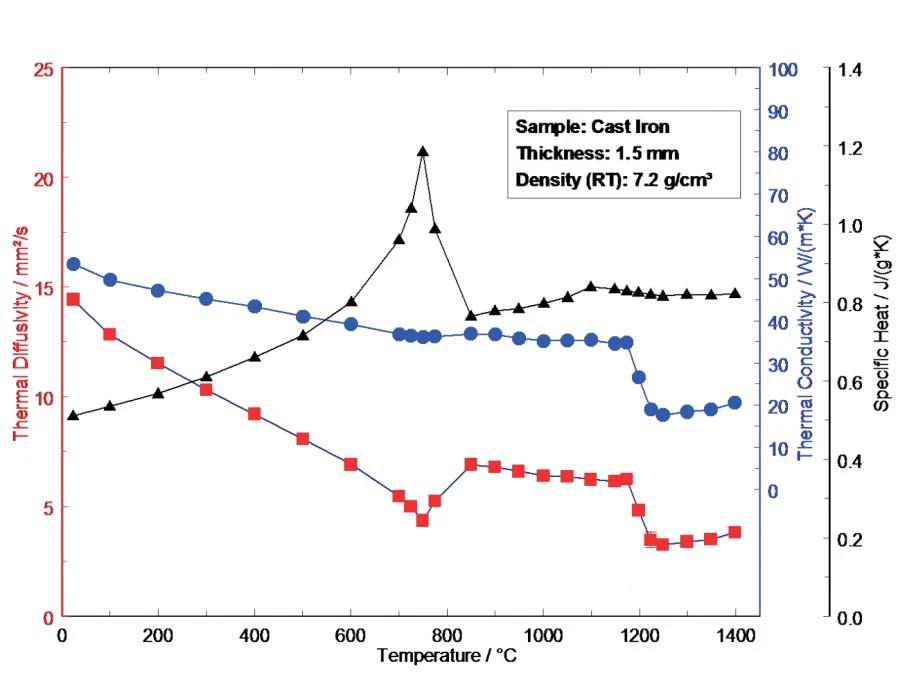Sample Holder for Liquid Metals (Sapphire)
Reduced development times and costs, the optimization of manufacturing processes and lower masses in spite of increasingly higher demands on thermally stressed components are important goals of the automotive industry. For example, numerical simulations are used to predict the temperature distribution within the engine components during the casting process. A basic necessity for this is the knowledge of the thermophysical properties of the casting material over the entire temperature range. In this application sheet the results of the measurement of the thermophysical properties of cast iron are presented. The LFA measurements were carried out using a special sapphire container for measurements of liquid metals. The sapphire container ensures defined dimensions of the liquid.
Test Results
The Thermal DiffusivityThermal diffusivity (a with the unit mm2/s) is a material-specific property for characterizing unsteady heat conduction. This value describes how quickly a material reacts to a change in temperature.thermal diffusivity and specific heat (measured with a DSC) show a typical behavior with peaks at the Curie transition (2nd order Phase TransitionsThe term phase transition (or phase change) is most commonly used to describe transitions between the solid, liquid and gaseous states.phase transition). The Thermal ConductivityThermal conductivity (λ with the unit W/(m•K)) describes the transport of energy – in the form of heat – through a body of mass as the result of a temperature gradient (see fig. 1). According to the second law of thermodynamics, heat always flows in the direction of the lower temperature.thermal conductivity decreases nearly continuously up to the melt. A typical step in the Thermal DiffusivityThermal diffusivity (a with the unit mm2/s) is a material-specific property for characterizing unsteady heat conduction. This value describes how quickly a material reacts to a change in temperature.thermal diffusivity/conductivity was detected for the Phase TransitionsThe term phase transition (or phase change) is most commonly used to describe transitions between the solid, liquid and gaseous states.phase transition (solid/liquid) above 1150°C. The reason is that the lattice structure collapses during the Phase TransitionsThe term phase transition (or phase change) is most commonly used to describe transitions between the solid, liquid and gaseous states.phase transition. The example clearly demonstrates that the LFA method is not limited to solid materials with defi ned dimensions. Using the sample holder for liquid metals, the measurement of iron alloys is possible also within the liquid phase.

Test Conditions
- Temperature range:
- RT to 1400°C
- Sample holder:
- Sapphire for liquid metal
- Sample thickness:
- 1.5 mm
- Sample surface preparation:
- Sandblasted
- cp from DSC, standard used:
- Sapphire